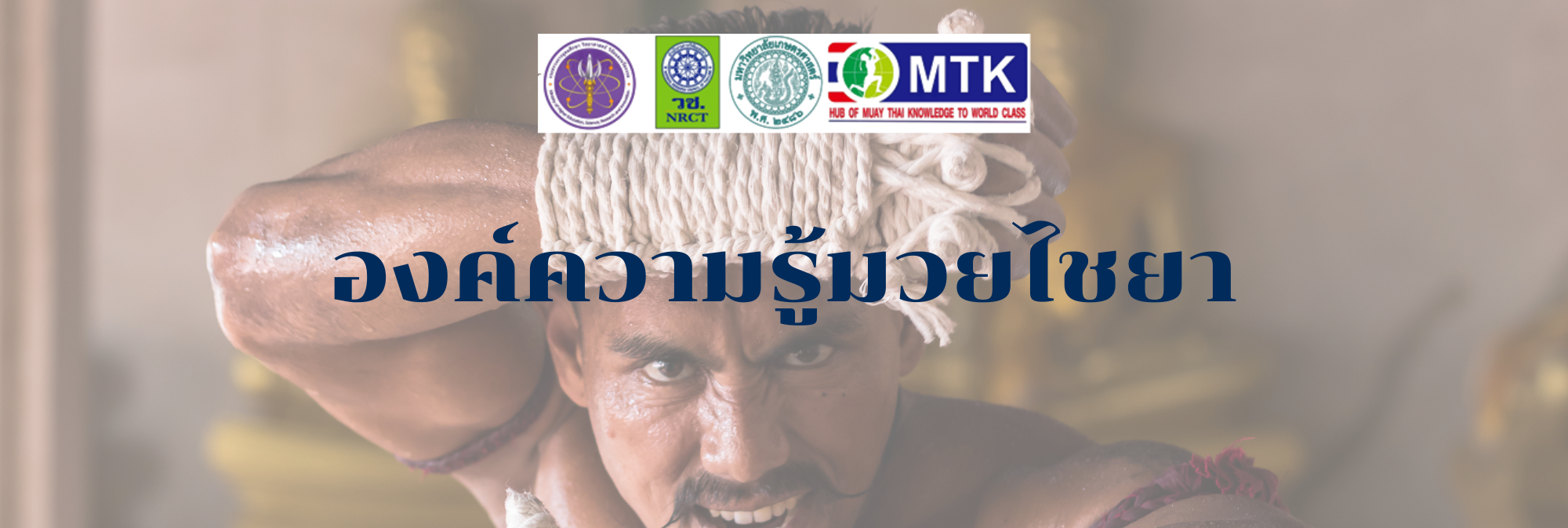
มวยไชยา
พ่อท่านมา เป็นครูมวยใหญ่ ท่านเชี่ยวชาญการต่อสู้และมีวิชาอาคมแก่กล้าสามารถเสกกระลาครอบช้างอาละวาด ที่มาทำลายพืชไร่ชาวบ้านเสียหาย จนวัดของท่านได้ชื่อว่า”วัดทุ่งจับช้าง” ศาสตร์ศิลปะมวยหลวงอันโดดเด่น ของท่านพ่อมา ได้มีการถ่ายทอด สืบต่อสู่ชาวเมืองไชยา ปฐมศิษย์เบื้องคนแรกของท่านคือเจ้าเมืองไชยา ตำแหน่ง พระยาวจีสัตยารักษ์ (ขํา ศรียาภัย) ซึ่งและยุคต่อมาคือ ครูมวยของหมื่นมวยมีชื่อ (ปล่อง จํานงทอง)
“เพราะครูทอง ได้เคยพูดไว้เสมอว่า”“มีอยู่สองคนที่ได้ วิชาจากครูมาที่สุด คือ แปรง กับ โย่ง”หรือ “ถ้าครูไม่อยู่ ใครจะเรียนมวยให้ไปหาแปรง”
อาจารย์พระยาวจีสัตยารักษ์ (ขํา ศรียาภัย) เป็นทั้งบิดาและปฐมบรมครูคนแรกของ อาจารย์เขตร ศรียาภัย และของหมื่นมวยมีชื่อ นายปล่อง จำนงทอง นักมวยไชยา อาจารย์กิมเส็ง (สุนทร ทวีสิทธิ์) ท่านได้ฝึกมวยไทยโบราณ”หมัดหงาย” จากครูเขียว (ผู้ใหญ่บ้าน หมู่บ้านเขตสระบุรี ท่านได้เริ่มสอนมวยไทยและสากลที่บ้านข้างวัดดอน ยานนาวา จนเกิดเป็น “คณะทวีสิทธิ์”ก่อนปี พ.ศ. ๒๔๗๗ ซึ่งอาจารย์เขตร ได้ยอมรับนับถือและได้ยอมขึ้นครูขอเรียนวิชาและฝึกมวยกับท่านอยู่หลายปี ต่อมากระทรวงศึกษาธิการ ได้เชิญอาจารย์กิมเส็ง เข้าสอนวิชามวยที่โรงเรียนของกระทรวง แต่งตั้งเป็นอาจารย์พลศึกษาของกรมพลศึกษากลาง มีลูกศิษย์มากมายกระจายอยู่ทั่วประเทศ จึงทำให้ “ท่ารำมวยพรหมสี่หน้า กับท่าย่างสุขเกษม แพร่หลาย กลายเป็นมรดกที่เห็นนักมวยไทย ใช้รำบนเวที กันอยู่จนทุกวันนี้
ปรมาจารย์เขตร ศรียาภัย เป็นลูกคนสุดท้องของพระยาวจีสัตยารักษ์ (ขํา ศรียาภัย) ทำการศึกษาวิชาการการต่อสู้ป้องกันตัว จากผู้เป็นบิดาปฐมครูคนแรก จากอากลัด ศรียาภัย หมื่นมวยมีชื่อ ครูอินทร์ ศักดิ์เดช ครูกลับ อินทรกลับ ครูสอง ครูดัด กาญจนากร ครูสุก เนตรประไพ ครูวัน ผลพฤกษา หลวงวิศาล ดรุณกร อาจารย์หม่อมเจ้า วิบูลณ์ สวัสดิวงศ์สวัสดิกุล อาจารย์กิมเส็ง ทวีสิทธิ์ นับว่าเขตร ศรียาภัย เป็นผู้ทรงไว้ซึ่งภูมิความรู้ชั้นสูง อย่างเอกอุของมวยไทยโบราณไชยา
ครูทอง เชื้อไชยา (ทองหล่อ ยาและ) ครูทองท่านได้ขอให้อาจารย์สามเศียร พาไปพบและขอฝากตัวเป็นศิษย์กับ อาจารย์เขตร ศรียาภัย ที่บ้าน และได้เริ่มเรียนมวยไชยาขั้นพื้นฐานตามลําดับ และชอบการชกมวยซึ่งต่อมาคุณย่าท่านป่วยหนัก และทราบเรื่องจึงขอให้ท่านเลิกชกมวย ท่านจึงต่อรอง ว่าหากไม่ให้ชกมวยก็จะขอสอนมวยแทน คุณย่าท่านก็ยินยอม พราะห็นว่าท่านชอบมวยมาก ครูทองจึงรับปากว่าจะเลิกชกมวยนับแต่นั้นมาและสุดท้ายเมื่อได้รับอนุญาตจากอาจารย์เขตร ท่านจึงเริ่มสอนมวยไชยา นับแต่นั้นเป็นต้นมา
ณปภพ ประมวญ (ครูแปรง) เริ่มเรียนกับครูทอง ตั้งแต่ปี พ.ศ. ๒๕๒๕ – ๒๕๓๙ โดยมีความมุ่งมั่นที่จะเผยแพร่ศิลปะมวยไชยาและวิชากระบี่กระบอง อาวุธไทย ให้เป็นที่รู้จักในวงกว้างปี พ.ศ. ๒๕๔๕ ครูแปรง และรุ่นพี่รุ่นน้องในชมรมฯ ได้ร่วมมือกันทํางานเผยแพร่มวยไทยไชยาอย่างจริงจัง และได้ก่อตั้ง “มูลนิธิมวยไทยไชยา” เมื่อวันที่ ๑๗ มิถุนายน ๒๕๔๖ โดยมีครูแปรง (ณปภพ ประมวญ) ประธานมูลนิธิฯ ครูแปรงได้ติดสอยห้อยตาม ครูท่านไปทุกหนทุกแห่งที่ท่านไปสอนมวยไชยา และมีโอกาสได้ช่วยท่านสอนมวยไชยาในที่ต่างๆ จากการได้ลงมือกระทําตามครูซึ่งมักมีคํากล่าวเมื่อ เห็นครูทองที่ไหนก็จะเห็นแปรงที่นั่น เหมือนพ่อกับลูกไปไหนไปด้วยกันเสมอๆ พ.ศ. ๒๕๓๙ ครูทอง เสียชีวิต ทําให้การดําเนินงานด้านเผยแพร่ มวยไชยา หยุดชะงัก ครูแปรง ขณะนั้นประกอบอาชีพ ทนายความ ได้ละงานประจํา มาดําเนินกิจกรรมสืบต่ออย่างต่อเนื่อง ในนามศูนย์ศึกษาสยามยุทธ์”บ้านครูแปรง”จนถึงปัจจุบันเป็นเวลา ๔๒ ปี (นับตั้งแต่ ปีพ.ศ.๒๕๒๕-๒๕๖๗)
เอกลักษณ์และอัตลักษณ์มวยไชยา มีความโดดเด่นไม่ว่าจะยืนสู้ นั่งสู้ ล้มอยู่ ก็จะมีเคล็ดวิชาการในการต่อสู้ขณะล้ม (ยืน นอน นั่ง เดิน) ดังนี้
ท่าครู เป็นท่าที่รัดกุมคุมตัวดีที่สุด คือ คุมทั้งตรงกลาง ด้านข้างซ้าย ขวา ล่างและบน แม้เพียงจะยืนท่าครูอยู่เฉยๆ ก็ตาม
คุมมวย มีท่าคุมมวย จดมวย ทั้ง สูง กลาง ต่ำ ที่เหมาะแล้ว ที่มีเคล็ดวิชาทั้ง ยืนสู้ เดินสู้ นั่งสู้ และนอนสู้ในทุกมิติการคุมมวยจดมวยเป็นการจดการคุมแบบปิดอ่อน เปิดคม สร้างความแหลมคมไว้ดุจป้อมปราการอัน หนักแน่น แข็งแกร่ง แหลมและคม พร้อมพลิกเหลี่ยมส่ายรับการรุกการโจมตี ทุกอณูทุกขณะจิต และจะอยู่ในป้อมปราการนี้แม้ยามต้องเป็นฝ่ายรุก ฝ่ายจู่โจม ฝ่ายใช้กลมวย กับคู่ต่อสู้ โดยยึดเคล็ดว่า “จะทำการใดๆ ก็อย่าทิ้งท่าครู”
เหลี่ยมมวย ท่าครู ท่าแม่ การคุมมวย การย่างสามขุม ที่รัดกุมคลุมตัว ทำมุมสี่สิบห้าองศา (๔๕ องศา) หันตีนฉียง ปิดเหลี่ยมอ่อน หันเหลี่ยมสันแข้ง ย่อเข่าทำมุมแหลม ให้กระดูก”หน้าช้าง”ที่แหลมและแข็ง โผล่ประดุจหนามแหลม ร่วมประสานกับสันแข้ง ประหนึ่ง ความคมกล้าแห่งศาสตร์ตราอาวุธก่อให้เกิด”เหลี่ยมมวย” ที่คอยรับ ปิด ป้อง ทิ่มแทง ผู้คิดกล้ำกราย เข้าใกล้ได้อย่างชะงัด สมกับคำที่ว่า เป็นศาสตร์แห่งเชิงรับที่รัดกุม
อัตลักษณ์ลีลา มวยไชยาเป็นได้ทั้งมวยเกี้ยว และมวยหลัก เนื่องเพราะมีหลักการ เคล็ดวิชา ที่ป้องกันตัวอย่างรัดกุมด้วยหลัก ป้อง ปัด ปิด เปิด (๔ ป.) เคล็ดวิชาท่าเท้าเคลื่อนไหวรอบทิศทางเป็นแปดทิศสิบทิศ ทั้งทางตรง ทางอ้อม ตามหลักแห่งตำราพิชัยสงคราม ว่าด้วยกลยุทธ์กลศึก “หัวหอกและปีกกา”
การแต่งตัว นักมวยไชยาจะใส่กางเกงขาสั้น เช่น กางเกงขาก๊วยสีดำหรือขาว คาดกระจับ (โล๊ะโป๊ะ) หรือคาดกระโปกด้วยผ้าสองผืนผืนหนึ่งพันทูลห่อลูกโปกไว้ อีกผืนพันรอบเอวมัดตวัด ต้าวจากง่ามขาหน้าไปหลังคุมหุ้มต้าวรั้งให้พันทูลกระชับแล้วรั้งปลายผ้าขมวดสอดรัดให้มั่นคงไม่หลุดหลุ่ย ระหว่างการชกอันดุเดือดฯ พันหมัดด้ายดิบ ด้วยด้ายที่จับเป็นใจเส้นใหญ่ ขนาดประมาณดินสอดำ ระยะการพันก็จะพันสั้น ประมาณไม่เกินครึ่งแขน บางท่านก็พันเลยข้อมือเพียงเล็กน้อยกันข้อมือซ้นเท่านั้น ตามความนิยม เพราะเอกลักษณ์การ ป้องกันตีน และอาวุธ ของมวยไชยานั้น เน้นใช้อวัยวุธรับอาวุธไม่รับแบบเอาร่างกายปะทะ เน้นใช้ คม ใช้หนาม คือศอก เข่า ตีน แข้ง หมัดฯ ที่ฝึกจนมั่นใจว่าแหลมคม ดั่ง”หนามทุเรียน”รับมากกว่าจะเอาแขนทบกัน อีกทั้งเพื่อเพิ่มความว่องไวของหมัดคมที่ถักก้นหอย ที่สากคม“ดั่งปลายหนามทุเรียนที่ถูกคลิป” พันสั้นจึงไม่ต้องคอนแรง น้ำหนักหมัด เพราะจะหนักพอควรตอนพ่นน้ำ ชุบมือบีบ แต่หากมวยผู้นั้นต้องการให้หมัดตนหนัก ก็ไม่เป็นการผิดถ้าจะพันยาว เพียงแต่พอฝึกถึงขั้นมั่นใจแล้วจะไม่นิยมเท่านั้นฯ
การแต่งมวยเป็นการปลุกปราณความเชื่อทางจิตวิทยาทางสากล แต่เป็นอิทธิอำปลัง ทางจิตศาสตร์ พุทธศาตร์”สายพุทธตันตระ”ว่าด้วยตะบะอำนาจทางกฤตยาคม หรือพลังจิต เพื่อให้นักมวยมีจิตใจที่เข้มแข็งฮึกเหิมมุ่งมั่นจนเกิดอำนาจตามมุ่งหวังฯ ครูท่านจะสวม “เครื่องคาด” ที่ลงอักขระ อาคม มีทั้งประเจียดหัว ประเจียดแขน แม้แต่ด้ายดิบคาดหมัด ขมิ้นเสกฯ โดยจะสวม”ประเจียดหัว” อันเป็นมงกุฎสูงสุดก่อนเครื่องคาดอื่นใด
การรำร่ายไหว้ครู ขณะต้องก้มลงกราบสิ่งศักดิ์ที่ตนนับถือยึดมั่น ก็จะกราบพระด้วยท่าเบญจางคประดิษฐ์ (เข่าสอง ศอกสอง หน้าผากหนึ่ง) ก็ตามที ก็ยังต้องนั่งเตรียมพร้อมแบบ “นั่งยองๆกราบ” แล้วจึงยืนขึ้นสอบลมตรวจปราณไหว้ครูน้อย ก้าวย่างสามขุมคลุมแดนยักษ์ แล้วหมอบยอบเข้า”เสือลากหาง” อันเป็นไม้เด็ดพรางกระทืบเท้าสะกดข่มธรณี กลับตัวยักเยื้องด้วยท่าพยัคฆ์ด้อมกวางเข้ามุมเป็นอันเสร็จพิธีฯ
ทักษะพื้นฐานและไม้มวยการพัฒนาผู้เรียนให้เกิดสมดุล ต้องคำนึงหลักการพัฒนาร่างกาย การพัฒนาสมอง และมีการต่อยอดวิชา คิดสร้างสรรค์ไปพร้อมกัน ตามหลักสูตร จึงกำหนดให้ผู้เรียนได้เรียนรู้ ๑๐ ขั้นของมวยไชยา ซึ่งแบ่งตามขั้นสาย ความต่างของหลักวิชาการ เนื้อหาสาระ เพื่อคุณภาพสูงสุดตามเจตนาของเจ้าของวิชา นี่คือเหตุผลว่าทำไมเราจึงต้องมีระบบการเรียนอย่างเป็นลำดับตามวิถีเเห่งวิชามวยไชยาเเละต่อยอดสู่วิชากายวุธ เพื่อความเป็นมาตรฐานเดียวกัน
ที่มาของข้อมูล : ศูนย์ศึกษาสยามยุทธ์ บ้านครูแปรง
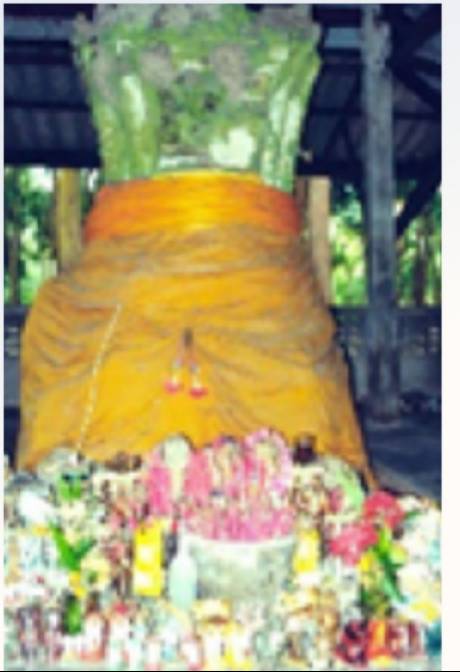

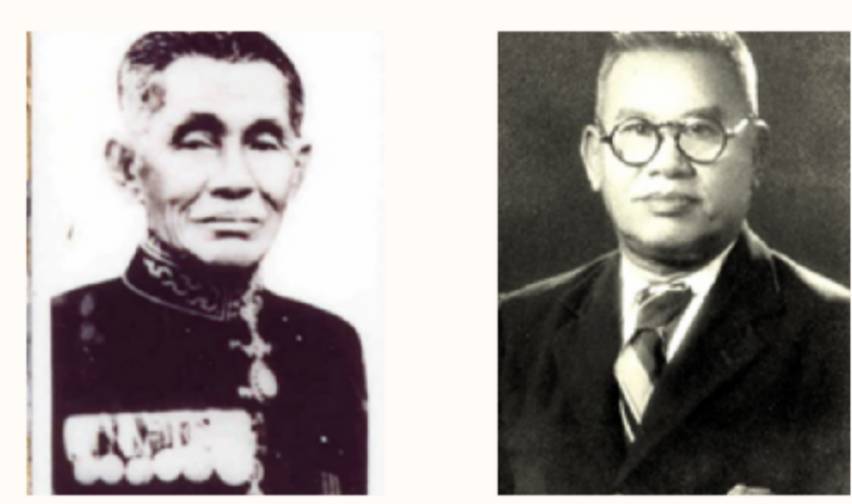

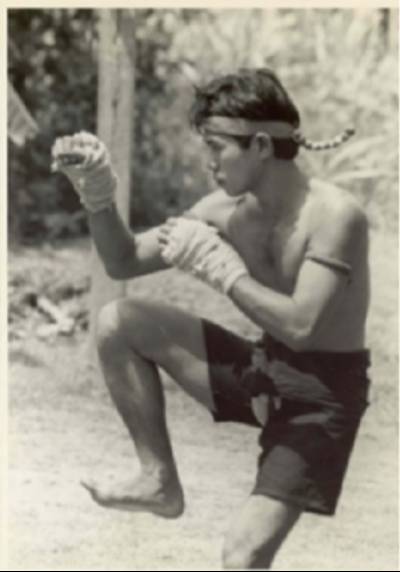

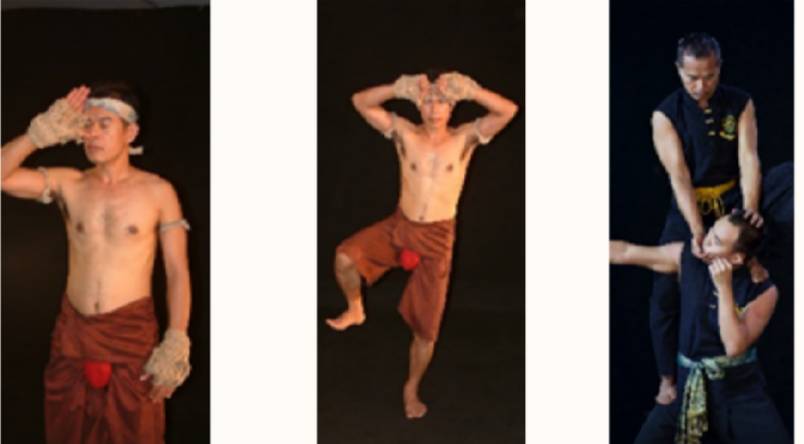
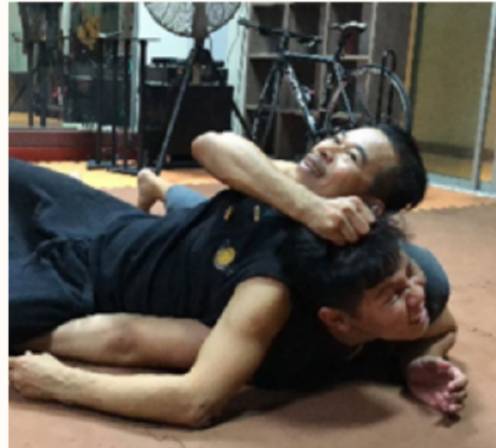
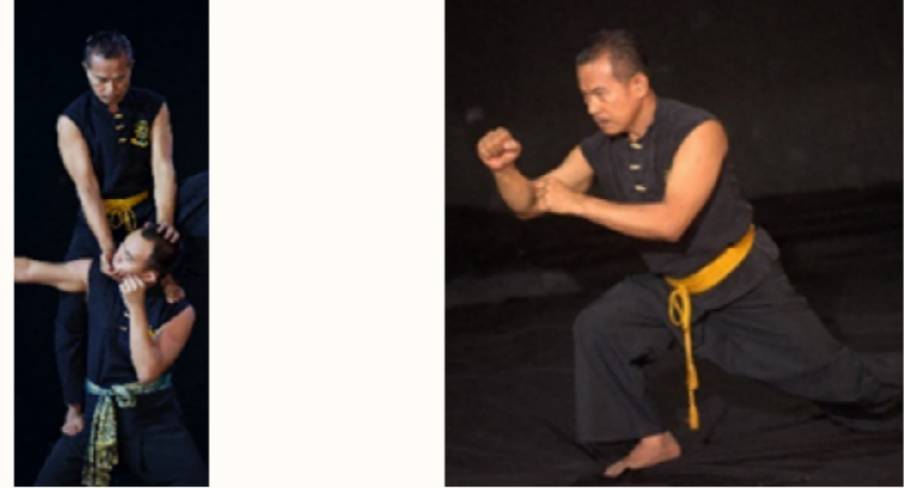
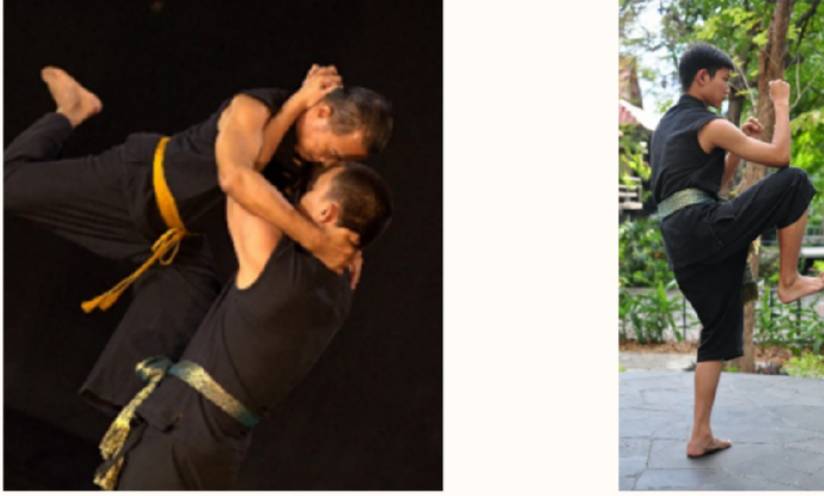
Muay Chaiya
Phor Than Ma was a revered Kru Muay Yai (Grand Master of Muay Thai), renowned for his profound mastery in both martial combat and sacred esoteric knowledge (wicha akhom). His spiritual prowess was legendary—he was said to have performed the miraculous act of enchanting a coconut shell (kala sek) to subdue a rampaging elephant that had been destroying villagers’ crops. This remarkable event led to his temple being named “Wat Thung Jap Chang,” meaning “The Elephant-Capturing Temple.”
The distinctive Muay Luang (Royal-style Muay Thai) system and martial artistry developed by Phor Than Ma were later transmitted and preserved among the people of Chaiya. His first principal disciple (phatthom sits) was the ruler of Chaiya, Phraya Wajeesatayarak (Kham Sriyapai), who became a devoted student and patron of the art. In the succeeding generation, the lineage was continued by the distinguished Kru Muay Muen Muay Mee Chue (Plong Jamnongthong), one of the most renowned and accomplished Muay Thai masters of his era.
Kru Thong often remarked:“There are two individuals who have inherited the martial knowledge (wit muay) from Kru Ma more profoundly than anyone else — Praeng and Yong.”
He would also say:“If Kru Ma is not around, and anyone wishes to study Muay, they should go to Praeng.”
Phraya Wajeesatayarak (Kham Sriyapai) was both the father and the first supreme teacher (pathom borom kru) of Ajarn Khet Sriyapai and of Muen Muay Mee Chue (Nai Plong Jamnongthong), the renowned Muay Chaiya master.
Ajarn Kim Seng (Suntorn Thawesit) was a distinguished martial artist who studied the ancient form of Thai boxing known as Muay Thai Boran – Mat Ngai (“the upward-facing fist technique”) under Kru Khiew, the village headman of Saraburi Province. He began teaching both traditional Muay Thai and Western boxing (Muay Sakon) at his home near Wat Don, Yannawa, before 1934 (B.E. 2477), founding what later became known as the “Taweesit School.”
Recognizing his exceptional skill and integrity, Ajarn Khet Sriyapai formally paid respect in the traditional Kru ceremony (Wai Khru) and became his disciple, training intensively under Ajarn Kim Seng for several years.
Later, the Ministry of Education invited Ajarn Kim Seng to teach Muay Thai at state schools, appointing him as a Physical Education instructor of the Department of Physical Education. Through his teaching, he trained numerous students across the country.
His creative Ram Muay (ritual dance) forms—“Phrom Si Na” (Four-Faced Brahma posture) and “Yang Sukhakasem” (Graceful Stepping form)—became widely disseminated and are now recognized as part of Thailand’s living martial heritage, still performed by Muay Thai practitioners on the ring before each bout to this very day.
Grandmaster Khet Sriyapai, the youngest son of Phraya Wajeesatayarak (Kham Sriyapai), began his study of martial arts and self-defense under his father, who served as his first and principal teacher (pathom kru). Throughout his lifetime, he continued to study with several eminent Kru Muay (Muay Thai masters), including Aglad Sriyapai, Muen Muay Mee Chue (Kru Plong Jamnongthong), Kru In Sakdech, Kru Klab Inthraklab, Kru Song, Kru Dat Kanchanakorn, Kru Suk Netpraphai, Kru Wan Phonphrueksa, Luang Wisal Darunakon, M.C. Vibul Sawadiwongsawatdigul, and Ajarn Kim Seng Taweesit.
Through this extensive lineage of masters, Ajarn Khet Sriyapai became the foremost authority and preserver of Muay Chaiya Boran—the ancient and sophisticated southern Thai martial tradition distinguished for its defensive techniques, counterattacks, and strategic movement (yang chawa). His knowledge was recognized as the highest embodiment of the Chaiya school’s martial wisdom (phum khwam ru muay boran chaiya).
Kru Thong Chuea Chaiya (Thonglor Yalae), later known as one of his most faithful disciples, was introduced to Ajarn Khet by Ajarn Samsian, who brought him to formally pay respects and request discipleship. Under Ajarn Khet’s guidance, Kru Thong began studying Muay Chaiya systematically, starting from the foundational forms and progressing through higher techniques.
He possessed a deep passion for boxing, yet during this time his grandmother fell seriously ill and requested that he cease fighting in the ring. Out of respect, he negotiated that if he could no longer compete, he would instead dedicate himself to teaching Muay Chaiya. Seeing his devotion to the art, his grandmother consented. From that day onward, Kru Thong vowed to stop competitive fighting and, with Ajarn Khet’s permission, began his lifelong path as a teacher of Muay Chaiya.
This marked the beginning of Kru Thong’s role in preserving and disseminating the authentic Muay Chaiya tradition, continuing the spiritual and technical lineage (sueb sarn wit muay) inherited from Grandmaster Khet Sriyapai.
Napapop Pramuan (Kru Praeng) began his study under Kru Thong Chuea Chaiya (Thonglor Yalae) in B.E. 2525–2539 (1982–1996). From the very beginning, he demonstrated a deep commitment to preserving and promoting the art of Muay Chaiya and the traditional Thai weapon arts (Krabi Krabong), striving to make them more widely recognized both nationally and internationally.
In B.E. 2545 (2002), Kru Praeng and his senior and junior peers from the Muay Chaiya Club undertook a concerted effort to promote the art more systematically. This initiative culminated in the establishment of the Muay Thai Chaiya Foundation on June 17, 2003 (B.E. 2546), with Kru Praeng (Napapop Pramuan) serving as the foundation’s first President.
During his years of apprenticeship, Kru Praeng accompanied Kru Thong wherever he went to teach Muay Chaiya. He had the opportunity to assist in teaching and demonstrations across many venues, earning the well-known saying among students and observers:
“Wherever Kru Thong was seen, Praeng was there too—like a father and son, inseparable.”
Following Kru Thong’s passing in B.E. 2539 (1996), the activities to disseminate Muay Chaiya temporarily halted. At that time, Kru Praeng, who was then working as a lawyer, decided to leave his professional career to fully dedicate himself to the preservation and continuation of Muay Chaiya.
He established the Siam Yuth Training Center (Ban Kru Praeng), which became a living institution for studying and practicing Muay Chaiya Boran and Krabi Krabong. From B.E. 2525 to the present (B.E. 2567), his lifelong dedication has now spanned 42 years, marking him as one of the foremost figures in the modern preservation of traditional Muay Chaiya.
Distinctive Identity and Characteristics of Muay Chaiya
The unique identity (Atthalak) and defining characteristics (Ekkalak) of Muay Chaiya are reflected in its comprehensive combat system, which emphasizes defensive and offensive strategies in every bodily position.
A true practitioner of Muay Chaiya is trained to fight effectively whether standing, sitting, or even while falling or lying on the ground, embodying the principle of “Yuen, Non, Nang, Dern” — Standing, Lying, Sitting, and Moving — which forms the essence of the art’s philosophy and physical methodology.
The Kru posture (Tha Kru) is the most secure and comprehensive guarding stance: it affords control over the center line as well as the lateral, inferior, and superior sectors of the body — even when one merely stands motionless in the Tha Kru posture.
The control system (Kum Muay) encompasses specific controlling postures and anchoring techniques (Jot Muay) at high, middle, and low levels, each adapted for combat in every modality — standing (yuen), advancing/walking (dern), seated (nang), and grounded/lying (non).
Jot Muay is a method of containment and control that combines a “closed–pliant” guard with an “open–acute” point of attack: it cultivates an edge of precision and readiness akin to a fortified bastion — solid, resilient, keen, and sharp — capable of pivoting, angling, and parrying against any offensive at every instant of intent. Practitioners remain within this defensive stronghold even when adopting the offensive role, when launching surprise attacks, or when employing circular/flowing techniques against an opponent. The injunction that governs the system is explicit: “In whatever action you take, never abandon the Tha Kru.”
The “Muay Angle” (Liem Muay)
The Muay angle (Liem Muay), derived from the fundamental stances — Tha Kru (the teacher’s posture), Tha Mae (the mother posture), Khum Muay (guarding control), and Yang Sam Khum (the three-step advancing pattern) — forms a compact and comprehensive guard. The body is positioned at a forty-five-degree (45°) oblique angle, with the feet slightly turned outward (turning the heel diagonally), thereby closing the soft angle and exposing the ridge of the shin. The knees are slightly bent, forming an acute angle so that the “elephant-front bone” (the anterior tibial ridge) projects sharply like a thorn, aligning with the shin ridge (san khaeng).
This configuration symbolizes the fusion of the body and the weapon, representing the keen precision and penetrating power of Thai martial arts. Such angular structure produces a defensive geometry capable of receiving, closing, blocking, and piercing any intruder who dares to engage — truly reflecting the maxim that Muay Chaiya is “the art of compact and impenetrable defense.”
Identity and Movement Style of Muay Chaiya
The distinctive identity and movement style (Atthalak Lila) of Muay Chaiya embodies both Muay Kieow (entwining, clinch-based fighting) and Muay Lak (firm, grounded fighting). This versatility arises from the art’s foundational doctrines — the Four Principles of Defense (4 P’s): Block (Pong), Parry (Pat), Close (Pit), and Open (Poe).
The unique footwork principles enable movement in eight to ten directions, both direct and oblique, harmonizing with the classical Art of War doctrines — the “spearhead and wing formation” (Hua Hok lae Peek Ka) — a strategic concept of flanking and encirclement.
Through such movement and stance, Muay Chaiya manifests as a science of dynamic equilibrium, combining stability, agility, and tactical foresight — an embodiment of Thai martial intellect refined over centuries.
Attire of Muay Chaiya Practitioners
Muay Chaiya fighters traditionally wear short trousers, commonly black or white khakuae pants, and a protective groin cloth called lod pho (or kradap). The groin guard is crafted from two pieces of cloth — one piece is wrapped around to enclose the genitals, while the other is wound tightly around the waist and drawn between the thighs to the back, securing the entire structure firmly. This ensures stability and prevents loosening during intense combat.
Fighters also wrap their fists (phan mat) with coarse cotton thread about the thickness of a pencil. The wrapping is typically short, covering less than half the forearm, though some may extend slightly beyond the wrist for extra joint support, depending on personal preference.
The short wrapping style reflects the defensive philosophy of Muay Chaiya — relying on awut phung sathan (natural weapons of the body) such as fists, elbows, knees, shins, and feet, rather than brute force. The style emphasizes sharpness and precision — “using the edge, not the flesh.” Each striking limb is honed to function like “the thorn of a durian,” sharp and defensive in nature. This short wrap allows faster, whip-like punches (mat khom ton spiraling like the conch shell) while maintaining substantial weight when the fists are moistened before a bout. Those desiring heavier punches may wrap longer, though it is less common among advanced practitioners who favor agility and sharp technique.
Spiritual and Psychological Dimensions of Muay Chaiya
The process of dressing for a match is not merely physical preparation but also a psychological and spiritual awakening — an act of awakening prana or internal energy. Rooted in Buddhist Tantric psychology (Phuttha Tantrayana), the ritual invokes kriyayakom — the meditative power of mind and will — to fortify courage, focus, and spiritual strength.
Masters often wear sacred accessories (khrueang khat) inscribed with yantra (Buddhist mystical scripts), including prachiat hua (headband), prachiat khan (arm bands), sacred cotton fist wraps, and khamin sek (blessed turmeric powder). Among these, the prachiat hua is considered the highest form of talismanic adornment — a symbolic “crown of faith” worn before all others to invoke protection and auspicious power.
The Wai Khru Ram Muay Ceremony
The Wai Khru Ram Muay of Muay Chaiya is a sacred pre-fight ritual that embodies respect, discipline, and spiritual grounding. Fighters begin by kneeling to pay homage to the Buddha, their teachers, and sacred entities through the benjangkan phradit posture — touching the ground with both knees, elbows, and forehead. The practitioner then rises to a semi-squat position (nang yong), controlling breath and energy flow (prana examination), before performing the Wai Khru Noi (small homage to the teacher).
The ceremony continues with the three-step march (yang sam khum) symbolizing control over the realm of the giants, followed by the Suea Lak Hang (Tiger Drags Its Tail) posture, stamping the ground to suppress negative forces. The ritual concludes with fluid transitions resembling the Phayak Dom Kwang (Tiger Stalking Deer), marking the end of the sacred performance and readiness for combat.
Training System and Pedagogical Philosophy
The Muay Chaiya training curriculum is designed to cultivate holistic balance among body, mind, and intellect. Its pedagogy emphasizes physical development, cognitive refinement, and creative application in unison. Learners progress through ten sequential levels (sip khan), each representing a distinct stage of technical mastery and philosophical depth.
These levels form a systematic progression — from fundamental movement principles to advanced combat strategies — ensuring that every practitioner attains comprehensive skill and understanding consistent with the founder’s intent. The advanced stages also extend into Wicha Kai Wut (armed combat disciplines), reinforcing a unified standard of excellence within the Muay Chaiya tradition.
Source: Siam Yuth Study Center, Ban Kru Prang
